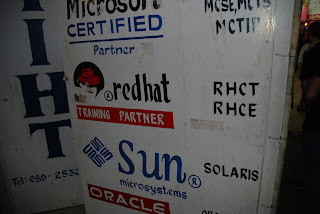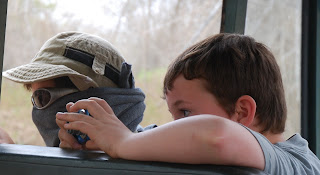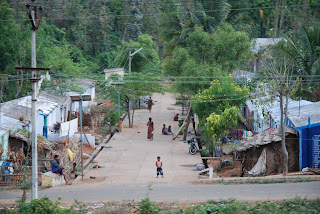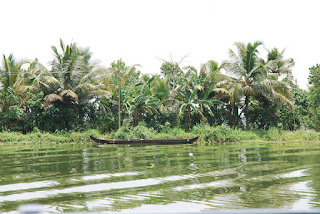My dissertation of October 2012, responding to the question:
What, in your opinion, is the worse global threat? after 6 months of Global security studies
(to share with my friends)
Addressing the UN General Assembly in 1988, Gorbachev said: ‘The relationship between man and environment
has become menacing ... the threat from the sky is no longer missiles but
global warming’
The surface causes are transport, energy needs, deforestation. The more
fundamental causes are political economy, industrialization, culture, ethics... The consequences are: rising sea levels, increase vector borne diseases,
increasing frequency of major storms, heat waves, extreme weather phenomena, the
melting of glaciers, the depletion of tropical forests and other species-rich
habitats, such as wetlands and coral reefs, and historically large losses of
biological species now occurring. In
human terms, this translates into reduced agricultural capacity, population
displacements, especially of low-lying communities in coastal areas,
severe economic problems, health issues. We also know that the countries with
the lowest greenhouse gas emissions will be the most affected, and the least
able to respond.
Let me now give you an example to
highlight the complexity from the perspective of Global Securities. The Tibetan
Plateau is the largest freshwater reserve outside the polar ice caps, so it is
a strategic asset for countries like China, India, Bangladesh, and Nepal. If temperatures
continue to increase at the same rate they have over the last 30 years, this
will mean flooding, food, water shortages on a massive scale, energy security problems,
for a fifth of humanity. To make things worse, this is a mineral rich area, and
tapping minerals in Tibet – gold, copper, chromium, lead, iron, zinc – could be
worth US 145 billion dollars. If human induced Global warming gets worse, the
potential release of carbon locked up in the permafrost may lead to an
exponential effect on Climate Change (Morton 2008: 60). Not only does this pose a
global threat, but to make things even more complicated, such activities may
lead to all sorts of conflicts. Tibetans resent mining activities in areas that
they consider sacred and that are their grazing lands. The interaction between climate
impact and pre-existing ethnic tensions also poses a serious risk of political
instability. Such threat is not just existential for humanity, but also
presents an intra- and inter-state security threat. A large number of lives and livelihoods are
at risk, and the impeding catastrophe could be prevented if we could find the
right security framework and act now. It is worth noting that the ethnic
tension issue is there to remind us that Climate Change is not the only
security issue which requires listening to transnational voices. The voices of
the Tibetan nomads cannot be heard at the state unit level, yet it is plausible
that they may be part of the Climate change solution. We are here touching at
the heart of our humanity.
We understand that Climate Change is not
only an existential threat (individual), but a possibility of serious destabilisation for states and it seems that it mostly depends on how the
threat is being conceptualised. This is when theory comes to the rescue.
In
a 2008 speech, Kevin Rudd defined national security as
‘Freedom
from attack or the threat of attack; the maintenance of our territorial
integrity; the maintenance of our capacity to advance economic prosperity for
all Australians’ (Rudd 2008a).
O’Neil
explains that although successive Australian governments, like their Asian
counterparts, express now sympathy to the emerging concept of human security – with the individual as
a referent point of security, political leaders are locked in a realist bent with the state as unit of
reference (2002: 3). As O’Neil explains, the way we think about future security
is ‘inferring from the past and present trends to produce a largely linear
picture of future developments’ (in terms of continuity). As a result,
political leaders tend to consider environment problems as belonging to the
realm of ‘low’ politics, rather than an issue of ‘high’ politics, like a direct
security threat to the national borders integrity. We can see that there is a
problem of hierarchy of threats or construction of security and it is very
important to understand what drives this hierarchy because of the way security
is comprehended defines policy priorities, funding and even the way issues
should be addressed.
The liberal answer to the realist approach is to move the referent
from the state to the individual, as we can see in the UN 1994, 22, United
Nations Human Development report 1994: New Dimensions of Human Security (New
York)
‘The traditional security framework simply ignores the fact that
for the vast majority of humanity, the real threats are not from military
invasion by neighbouring states, but are from hunger, crime, disease, political
repression and environmental hazards’
The
focus is now on the individual, and it is not the symptoms but the deeper
causes of violence that are being securitised. The UNDP’s 2007-08 HDR
specifically addressed ‘climate change as its central theme suggesting that
this constituted the most significant challenge to human survival in the twenty
first century’ (cited in Mc Donald, 2008: 12).
‘Human security is indeed indivisible. There is no longer such a
thing as a humanitarian catastrophe occurring in a faraway country of which we
know little’ ... ‘In an interdependent world, in which security depends on a
framework of stable sovereign entities, the existence of fragile states, failing
states, states who through weakness or ill-will harbour those dangerous to
others, or states that can only maintain internal order by means of gross human
rights violations, can constitute a risk to people everywhere’ (ICISS 2001a, 5).
Warning!
Underdevelopment within a state was not regarded as a threat to international
peace and security. Now it is. ‘Failed states strangely become ‘the threat’. What
about the states who will be first victims of Climate Change? So whose security
are we talking about? Who is in danger? Whose interests does the UN protect?
Critical theorists of International Relations
warn us against the UN human security framework: ‘there is an explicit merging
of security and development (UN 2004, viii) and an erosion of the division
between domestic and international security. There is a risk that the
relocation of sovereignty of the human security framework may disempower
citizens in weak states as it allows for the rehabilitation of intervention and
regulation by either the international community or powerful states’ (McCormack,
2008 :122). The weakest and poorest states lose even the formal protection of
the pluralist norms of sovereign equality and non intervention. In the
contemporary context, it is argued that only certain states and international
institutions will decide who is a good international citizen, for example, Moldova
or Botswana will not decide on the course of action and insecurity in deprived
area of US, Britain, or Japan. The current framework renders powerful states
less accountable for their actions. What critical theorists really mean is that
the ‘UN liberal human security framework (so far) focuses on internal factors
of insecurity within the underdeveloped states and excludes broader questions
of the existing international economy, unequal power relations and the weak
positions of the poor and underdeveloped states occupy in terms of their
abilities to control or influence their own economic development’ (Cormack,
2008: 125).
Therefore care is required before advocating
the association between security and environment. It should be weighed against
its consequences. This would be
framing ‘a catastrophic event’ and/or ‘failed states’ as the enemy instead of
framing ourselves, our market mechanisms, the promotion of liberal order as it
is now, and multilateralism as the enemy. This would be an error of identification of
whom and where the enemy is. ‘the securitization of climate change has avoided
the identification of enemies’ (Trombetta, 2008: 598). So what should we do if we cannot trust the state alone or even
the UN in its current framework?
I
think we cannot ‘not work’ with the existing structures;
we just need a holistic approach with a few adjustments in the mode of security
delivery and a central role of cooperation between states, transfer of
technology, prevention, disaster management. For example, we may need to
rethink military responses: forces may need to be trained and deployed for the
purpose of engaging in humanitarian or search and rescue operations,
participate in military to military workshops on emergency management. Their
involvement may actually relieve the plight of environmental migrants and
prevent further tragedies. Likewise, if conducted in an ethically acceptable
manner, Disaster Management missions may be an opportunity of meaningful
collaboration between traditional enemy states like the US and some of the
poorest antagonistic Muslim states on the front line of the Climate change
threat. This is where US return to
pro-isolationism and
China’s shy engagement in
trans-national environmental cooperation may be tested. Perhaps, the world will unite under the
banner: ‘Time to Repair’ as China will be on the US side, since it will bear
comparable responsibility for Climate Change.
The
way we should frame the issue is not only on the logistical level. There is
also an ethical dimension: non shattered populations will need to be asked by
their politicians if they would consider the issue of whether they will be
responsible for some of the cost of recovery and perhaps accommodating people
migrating from affected areas intra- and inter- states in order to avoid
reactive actions when they are put in front a fait accompli. Governments may have to prepare their populations
for such realities; this may avoid deployments of military forces against
environmental migrants (Smith, 2007: 622). Another approach which may advance
internal debate and facilitate international cooperation is the re-emergence of
such concept as hexie fazhan
(harmonious development) in policy discourse (Morton 2008 :59).
The
difficulty in finding the right framework extends to other contemporary
security threats. New threats are largely uncertain, diffuse, difficult to
quantify and yet potentially catastrophic. Nuclear, chemical, genetic
technologies, radicalism of all kind have the potential to bring destruction to
such a scale that no remedial action or insurance can be appropriate. Beck
explains that ‘contemporary risks affect everybody and it is impossible to
create barriers and distance oneself from them. Beck suggests that the time has
come for prevention of disorder and catastrophes, rather than merely reaction
and control (cited in Trombetta, 2008: 590).
We
have to acknowledge that environmental change is complex, multidimensional, and
that one of the biggest problematic of negotiations on climate change is that
it requires the transformation of much of the existing economic structure and
way of life. Along those who decide ‘not too see’, there are those who despair:
De Wilde (2008) asks the abrupt question
‘should we change the existing structures or is it preferable to wait
until structural change will be enforced violently and randomly by
environmental crises’ (cited in Trombetta, 2008: 595). My response to those is
that there is no need to despair yet, we need to understand and work with the emerging
spheres of influence, and embrace complexity. Which are these spheres?
Security
Gap and Neo-medievalism - As they invest in more frequent environmental
interventions of all kinds inter- or intra-state, and while collective
governance institutions such as the UN have a long way to go before they can
fully develop a governance capacity, states may be losing their capacity to
provide public good of security. While a security gap may open, this may not be
a problem per se if we work within the new framework. The emerging concept of
Neomedievalism means that we are increasingly in the presence of a plurality of
overlapping, competing, and intersecting power structures – institutions,
political processes, economic developments, mediatic and social transformations – above, below,
and cutting across states and the state system. This translates into unevenly
developing spaces and the fragmentation of old space, multiple loyalties and
identities. For example the monitoring and regulating economy is likely to
differ from sector to sector rather than from state to state. Cerny (2005) explains
that the overlapping and competing jurisdictions and socio-economic
arrangements are creating a world that looks more and more like the medieval
one. States will represent only one level of this power structure enmeshed in
wider complex webs of power (Cerny: 12). Of course civil and cross border wars
are nothing new, and terrorism has been with us throughout human history.
However, their interconnectedness and the way they are inextricably intertwined
with other aspects of globalisation is the key to understanding the nature of
contemporary security and insecurity (Berzins 2003: 8-32). Nations states will represent only one layer
of governance while seeking not to lose too much power and prestige to the
nouveaux riches or transnational elites and new transnational bureaucracies of
the global economy. In this first place, states are transformed into structures
that will be able to better survive in a multilayered multitier global context,
that of the “competition state” (Cerny 205:21).
Now
that we comprehend better the upcoming overlapping security framework, let’s
weigh environmental issues against other security threats - One of
the biggest threats is perhaps nuclear armament in my humble opinion, but I
have revised my opinion over the years. The arrival of the nuclear revolution in the
1940s promoted a widely held thesis that wars could never be fought in the
shadow of nuclear weapons, given the risk that they would inevitably escalate
to nuclear conflict. As it turned out, even nuclear states turned to
conventional conflicts. So the threat is not so much nuclear escalation as it
is conventional warfare if we look at the facts. Nuclear weapons are now acquired by states who
perceive asymmetric utility against conventionally stronger adversaries, and
the enhanced political influence nuclear weapons confer internationally (I
would add perhaps ‘used to’). This is the case for North Korea, Pakistan and
Iran. Nuclear wars are less and less likely to be fought as we are aware not
only about the existential, but more and more about the environmental impact of
such tragedy that ALL will have to bear: ‘no state wants to deal with the
negative effects of potential reprisal and large-scale reputational costs and
genuine normative considerations about what constitutes responsible state
behaviour’ (Potter 2010: 11). Another pressing issue is the collapse
of democracy and return to authoritarianism in countries like Indonesia, the
collapse of North Korea (and possibly China), or China challenging America’s
seven-decades dominance in Asia, energy supply disruptions. All these very
serious issues could have an impact on the world security outlook, in the short
term, but not in the longer term like climate change, and that is why I would
label climate change the greatest threat to international peace and security. Likewise,
a mass influenza epidemic, or a chemical/nuclear device terrorist attack is
more likely than exponential climate change impacts, but the security threat
posed by the latter would be far greater than the former in intensity. There is,
of course, the moral dimension of responsibility towards future generations.
Conclusion - Perhaps it is time for a
new security paradigm. Perhaps we need something more than arms control and
traditional diplomatic negotiating formats. Good security today means tackling many
non-military threats to nations and their peoples: since 2001 we have acknowledged
the challenges posed by other forms of violence, such as radicalisation (and to
a lesser extend terrorism), gender relations, relative and absolute poverty,
even the global crash of 2008 drew attention to the many security ramifications
of economic hardship. Today’s missiles are invisible, insidious – CO2. Challenges
of this kind ignore international borders, making no distinction between
political friends and enemies. It is hard to argue we can leave environmental
security to the state solely to manage when the survival and livelihood of
millions is at stake. We have seen that there is a re-negotiation of the spaces
in which risk management and market mechanisms prevail, where the interventions
will take place and where regularisations will be legitimised, and while this
is not without risk, the Climate Change challenge should remind us of the common
security interests that mankind share, that our core security still resides in
our capacity to change and adapt to a context, and give a strong impulse for
building a co-operative security community based on preventative, non
confrontational measures and the importance of other actors than states in
providing security. It is definitely high politics!
‘The political, ethical, social, philosophical problem of our days is not
to try to liberate the individual from the state and from the state’s
institutions, but to liberate us both from the state and from the type of individualisation which is linked
to the state – Michel Foucault, ‘The Subject and Power’






















































































































































































